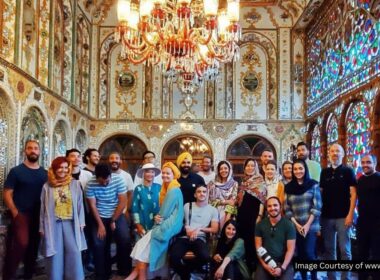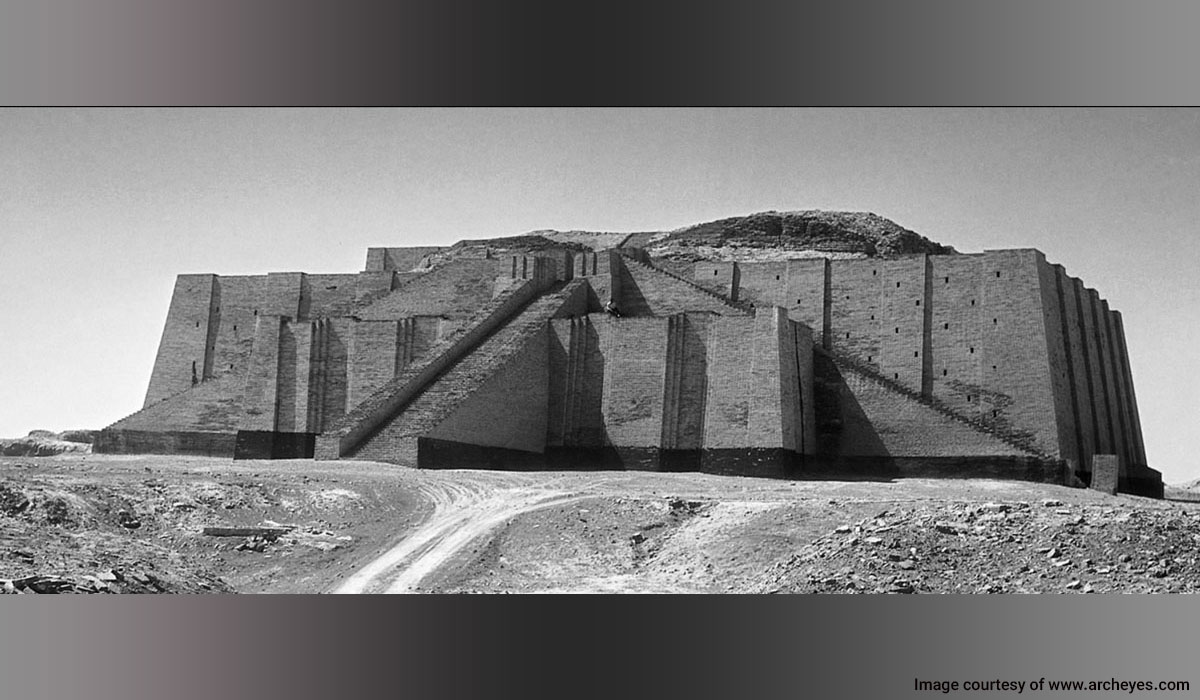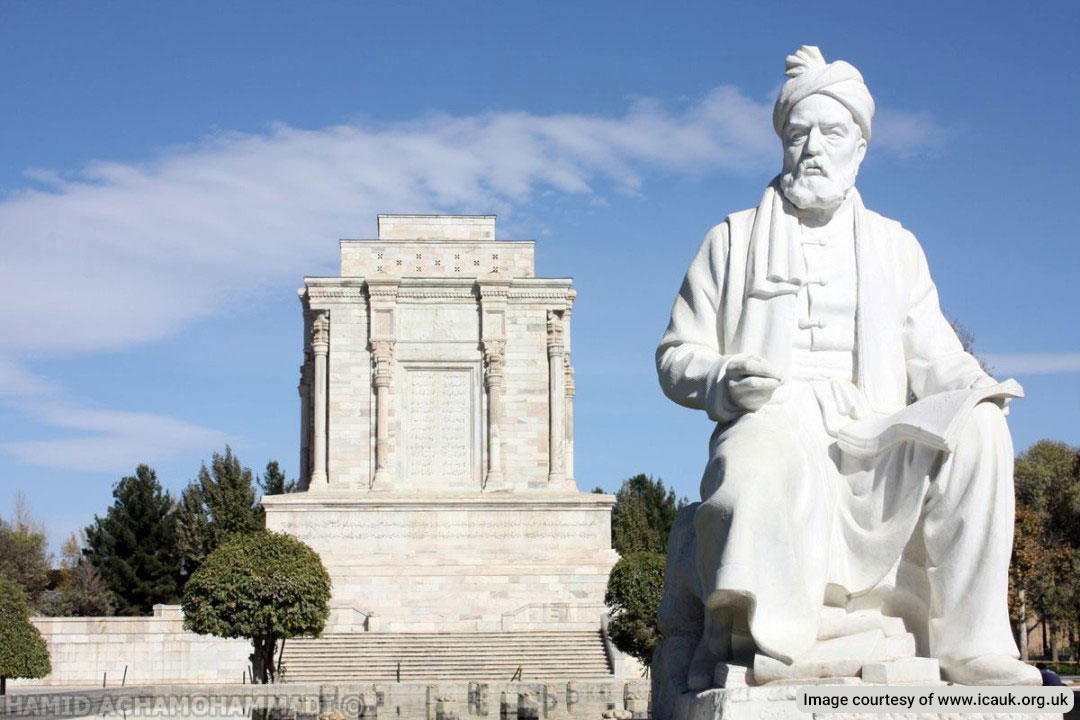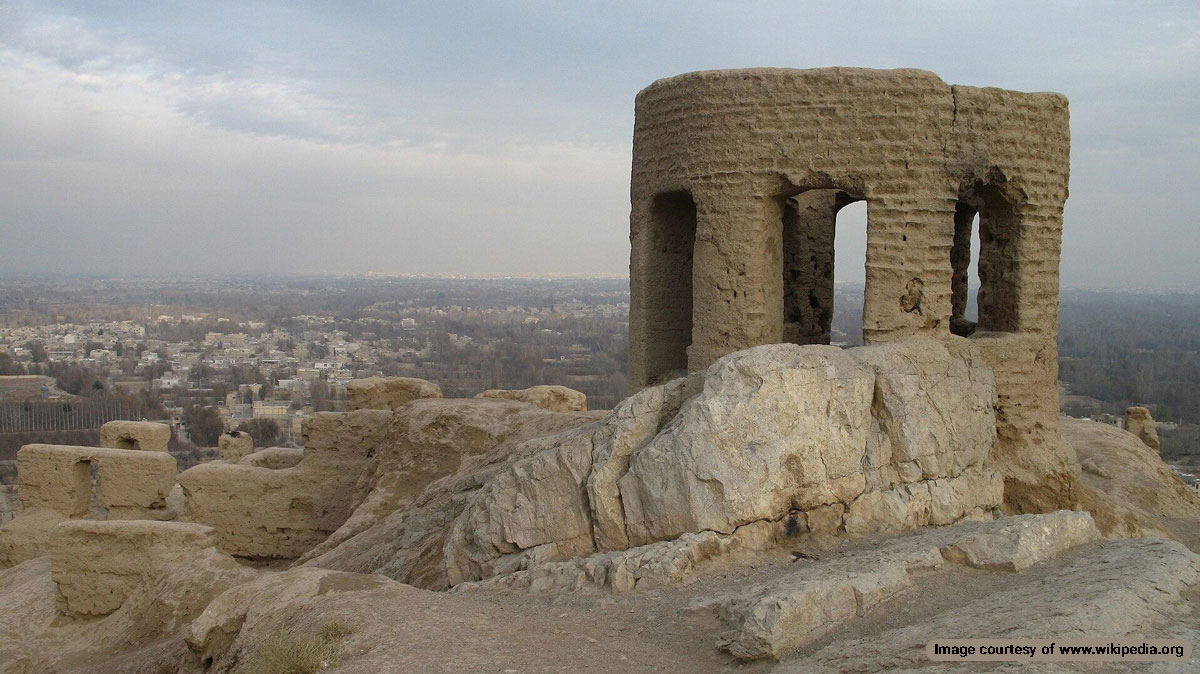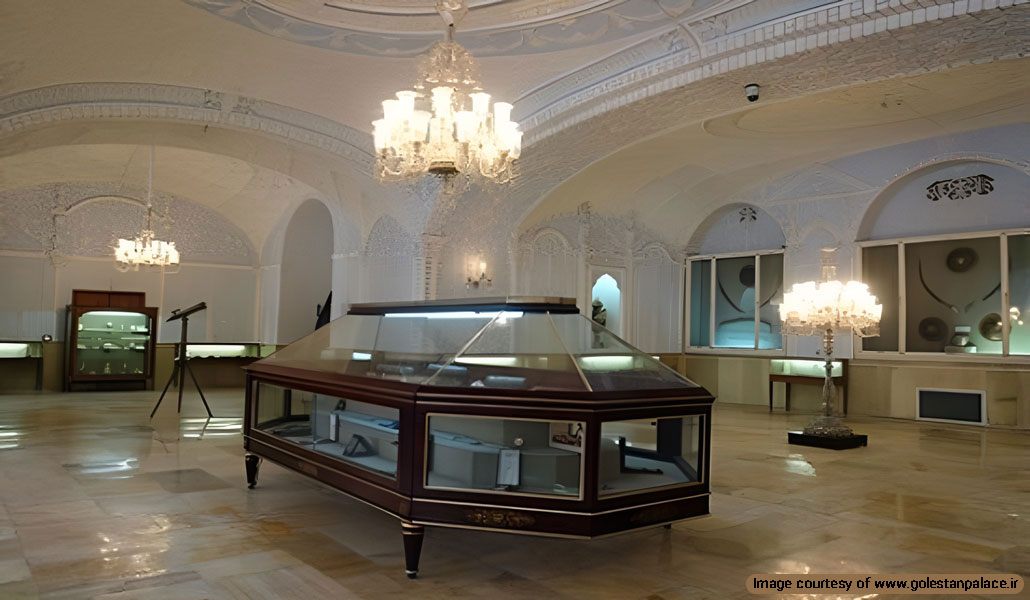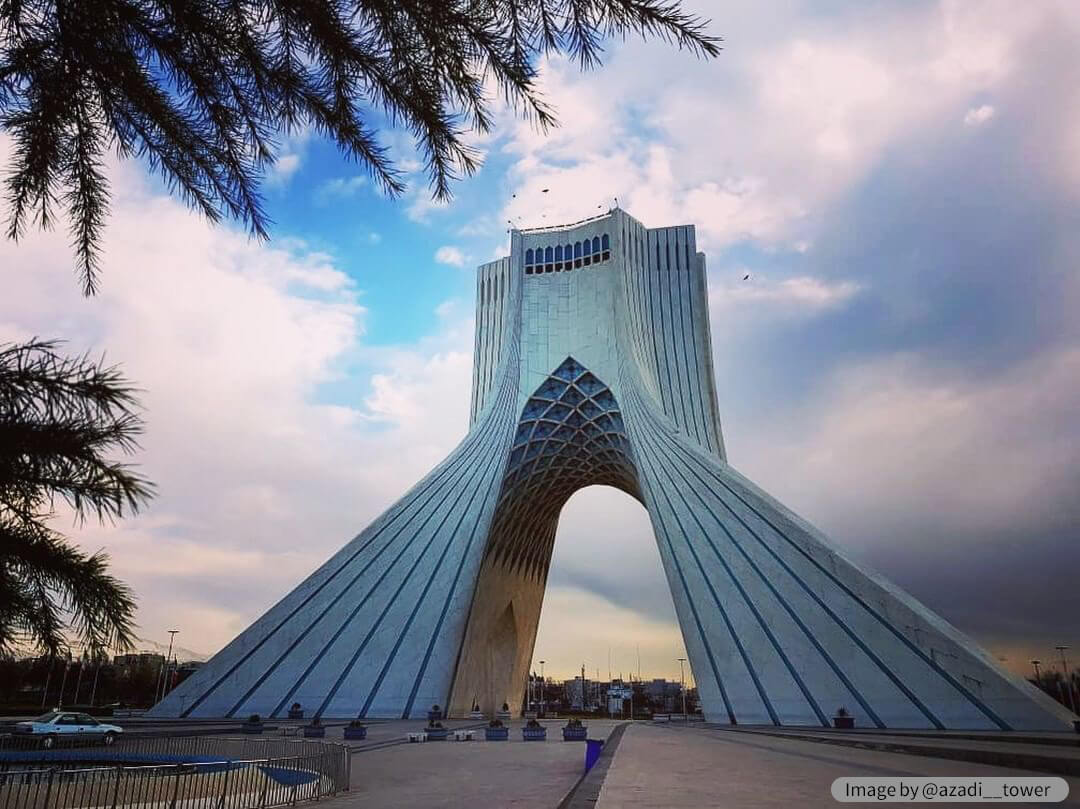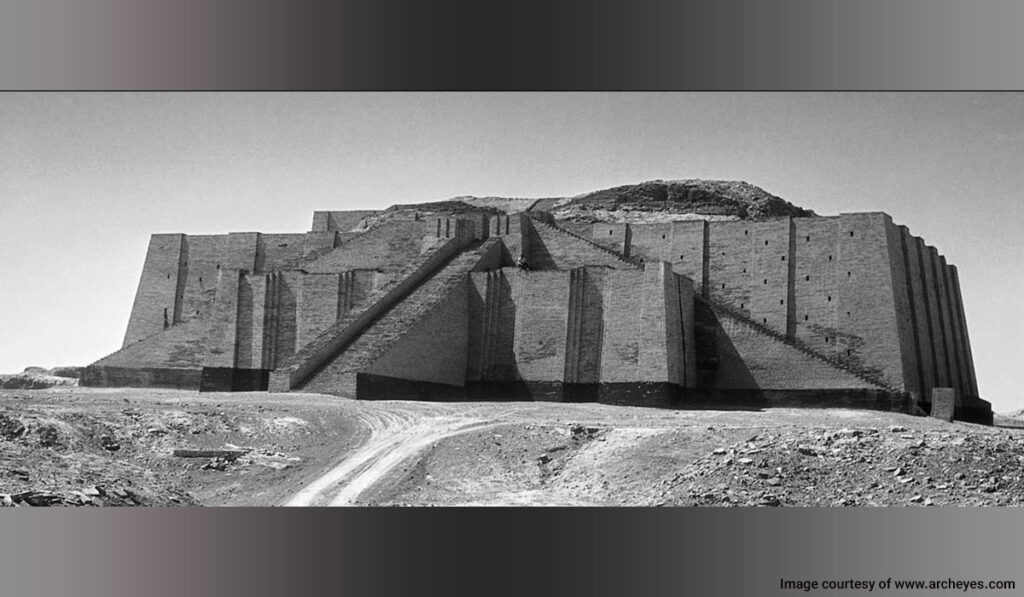
Ziggurats originated in ancient Mesopotamia, around the 3rd millennium BCE. They are primarily associated with the ancient civilizations of Sumerians, Akkadians, Babylonians, and Assyrians. The word “ziggurat” is derived from the Akkadian word ziqqurratu, meaning “to build on a raised area.”
These structures were designed as a way to connect heaven and earth, with their tiered platforms symbolizing a stairway to the gods. Each ziggurat was dedicated to a specific deity, believed to reside at the top of the structure. One of the most famous examples of Ziggurats in Iran is the UNESCO World Heritage site Tchogha Zanbil in southern Iran.
Ziggurat Architectural Features
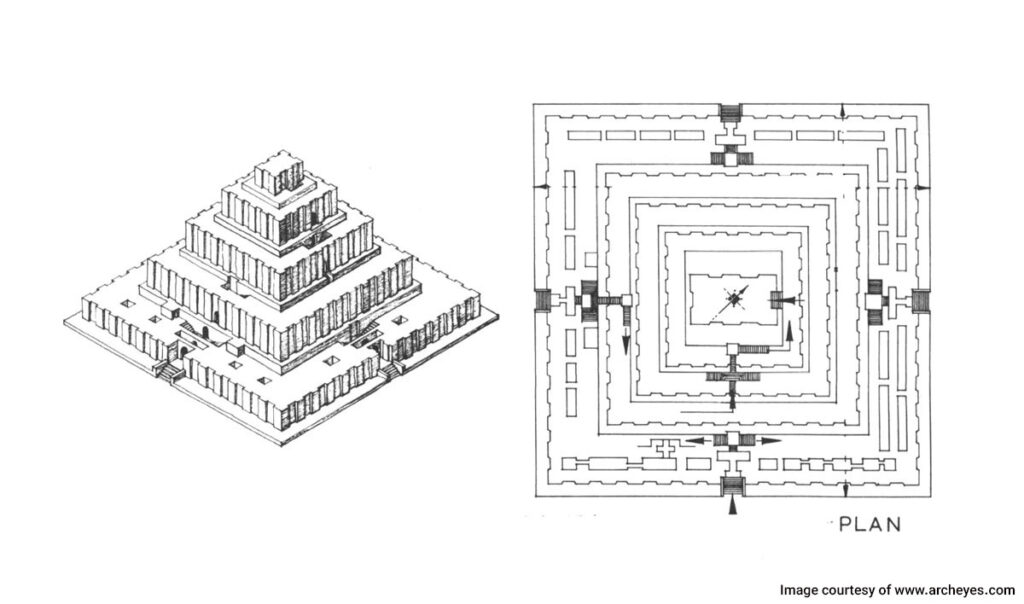
Ziggurats are ancient buildings with a distinct type of architecture that were found across the Middle East. These buildings share similar features that make them stand out in the primarily desert-like regions of their surroundings. Ziggurats exemplify the advanced architectural and engineering skills of ancient civilizations. Their construction required meticulous planning, extensive labor, and sophisticated knowledge of materials and techniques.
Terraced Design
Ziggurats were constructed with a series of stepped levels or terraces, often receding inwards as they ascended. This design was not only architecturally impressive but also practical, allowing for stability and strength.
Mudbrick Construction
The core of a ziggurat was typically made from sun-dried mudbricks, while the outer layers were covered with baked bricks. These materials were readily available and suitable for the local climate.
A Temple at the Summit
At the top of the ziggurat was a temple or shrine, which was considered the dwelling place of the god to whom the ziggurat was dedicated. Access to this temple was usually restricted to priests and royalty.
Impact of Ziggurat Architecture on Later Cultures
The concept of the ziggurat influenced the architecture of religious structures in subsequent cultures. For instance, the pyramidal shape and the idea of a sacred space elevated towards the heavens can be seen in later structures across different civilizations.
Despite extensive research, many aspects of ziggurats remain shrouded in mystery. Questions about their exact construction methods, the full extent of their use, and the details of the rituals performed within them continue to spark curiosity and debate. Studying the architecture of these historical sites may be the key to understanding their secrets.
Religious and Cultural Significance of Ziggurats
Ziggurats played a central role in the religious and cultural life of ancient Mesopotamian societies. They were not merely architectural marvels but were seen as bridges between the human and divine realms. The construction of a ziggurat was a communal effort, reflecting the society’s devotion and reverence for their gods.
Ziggurats were designed to bridge the gap between the earth and the heavens. The terraced levels symbolized a stairway to the gods, and the summit temple was considered the dwelling place of the deity to whom the ziggurat was dedicated. This elevated position emphasized the god’s supremacy and the sanctity of the temple.
The construction of a ziggurat by a king or ruler was a demonstration of divine sanction and legitimacy. By building these structures, rulers reinforced their connection to the gods and their authority over the people. Building a ziggurat was a communal effort that involved various segments of society. This collaborative process fostered social cohesion and a sense of shared purpose. The ziggurat became a unifying symbol for the community, reflecting their collective identity and devotion.
They stimulated trade and craftsmanship, as materials and labor were sourced from various regions. The ziggurat’s presence often transformed the surrounding area into a bustling religious and economic hub.
Ziggurats in Iran
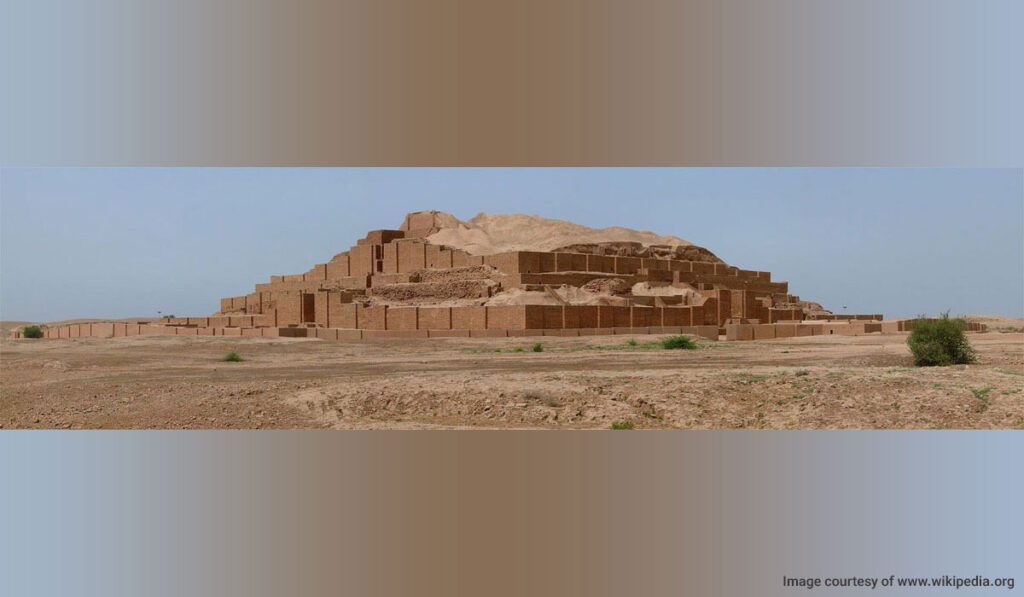
While ziggurats are more commonly associated with ancient Mesopotamia, Iran is home to some notable examples:
Chogha Zanbil
Located in the Khuzestan province, this is one of the best-preserved ziggurats and a UNESCO World Heritage site. It was built around 1250 BCE by the Elamite king Untash-Napirisha. The complex includes three concentric walls and multiple temples dedicated to various deities.
Tepe Sialk
Situated near Kashan, this site features ancient ziggurat-like structures dating back to the early 3rd millennium BCE. Excavations have revealed artifacts such as pottery, tools, and early architectural remains, providing insights into the lives of its ancient inhabitants.
Konar Sandal Ziggurat
Also known as the Ziggurat of Jiroft, this is one of the largest and oldest ziggurats discovered in Iran. It dates back to around 2200 BCE. The site includes two large ziggurats and has revealed a wealth of artifacts, including pottery, metal objects, and inscriptions, shedding light on the ancient civilization that once thrived there.
Susa
The ancient city of Susa has remnants of ziggurat structures, reflecting its historical significance as a major cultural and religious center. Some excavations revealed palaces, temples, and artifacts dating back to the 4th millennium BCE.
Ziggurat of Haft Tepe
Located near the ancient city of Susa in Khuzestan province, this ziggurat dates back to the Elamite period and is believed to have been dedicated to a deity. Although less preserved than Tchogha Zanbil, it reflects similar architectural features.
Preservation of Ziggurats
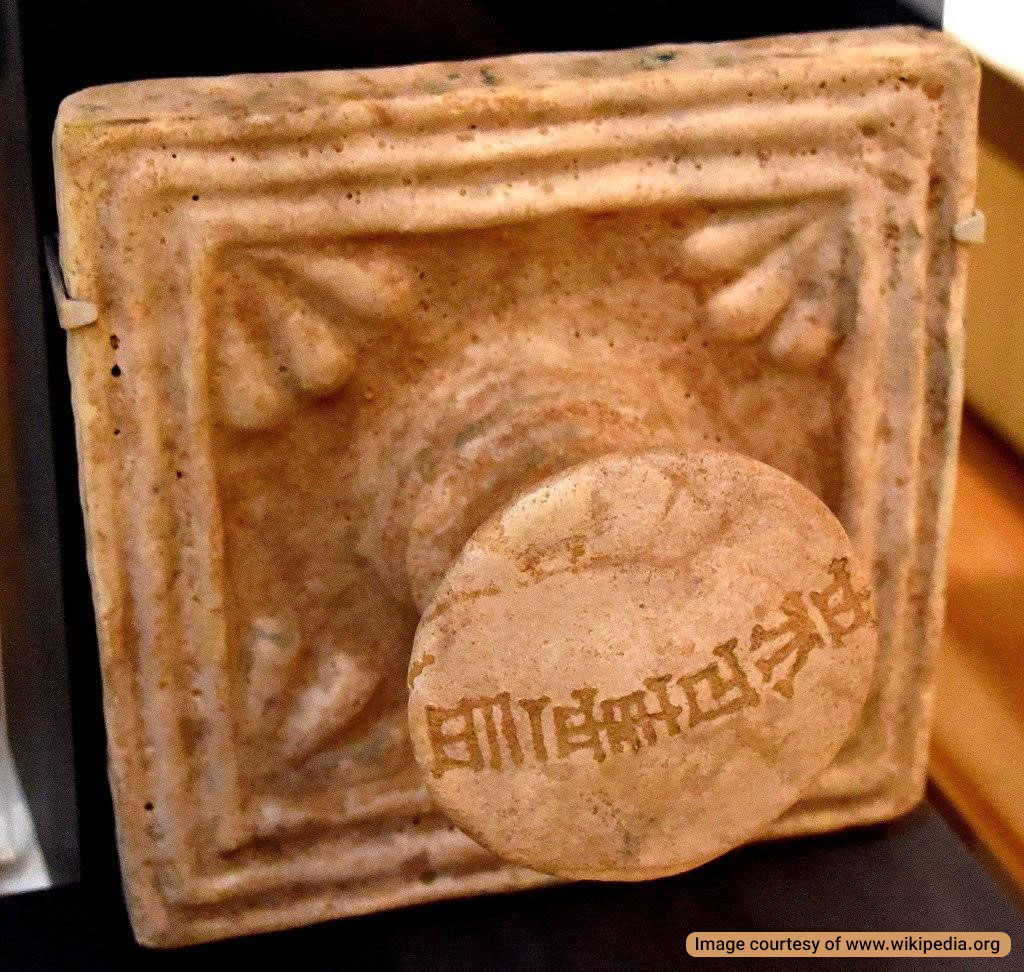
Preserving ziggurats is vital for understanding ancient civilizations and their architectural achievements. It requires a combination of scientific techniques, careful planning, and collaboration among various organizations. There are several methods to conserve these historical sites:
Stabilization and Restoration
Techniques like soil stabilization help prevent erosion and structural collapse. This includes grouting and the use of modern materials to reinforce ancient walls. Efforts to restore original structures must use materials that replicate the original ones as closely as possible to maintain authenticity.
Environmental Management
Protecting ziggurats from natural elements (like water erosion or seismic activity) is crucial. This involves constructing drainage systems and barriers. Implementing conservation plans that include limiting access to sensitive areas and developing visitor pathways helps protect these sites from wear and damage.
Legal Protection
Many ziggurat sites are protected under national and international heritage laws. UNESCO World Heritage designation, as with the Ziggurat of Chogha Zanbil, helps secure funding and support for preservation efforts. Engaging local communities in preservation efforts fosters a sense of ownership and responsibility toward their cultural heritage. Training locals in conservation techniques can also provide sustainable maintenance of the sites.
Visit Fascinating Ziggurats in Iran
The enduring fascination with ziggurats lies in their ability to connect us with a distant past, showcasing the creativity, spirituality, and resilience of ancient civilizations. Their towering presence and the secrets they hold continue to captivate our imaginations, ensuring that ziggurats remain a subject of study and admiration for generations to come.
You can visit the several ziggurats we introduced in various parts of Southern Iran as part of Iran’s historical heritage tours. Make sure to follow responsible tourism guidelines to avoid damaging these ancient masterpieces.
Frequently Asked Questions about Ziggurats
If you have any other questions about the Ziggurat, its architecture, or other related topics, let us know in the comments. We will respond as soon as possible.
What is a ziggurat?
A ziggurat is a massive, terraced structure built in ancient Mesopotamia and Iran, primarily for religious purposes. These stepped pyramids were designed to connect the earth with the heavens and were often dedicated to specific deities.
Where were ziggurats built?
Ziggurats were primarily built in the regions of ancient Mesopotamia, which includes modern-day Iraq, and parts of Iran. Notable examples include Chogha Zanbil in Iran and the Ziggurat of Ur in Iraq.
What was the purpose of ziggurats?
The primary purpose of ziggurats was religious. They were believed to be the dwelling places of gods and served as temples where priests conducted rituals and offerings to appease the deities. They also symbolized the link between heaven and earth.
Can the public visit ziggurats?
Many ziggurat sites, such as Chogha Zanbil, are open to the public and can be visited. These sites often have visitor facilities and provide guided tours to help people learn about the history and significance of the structures.


